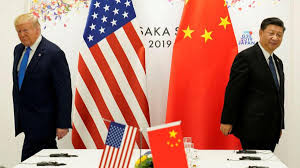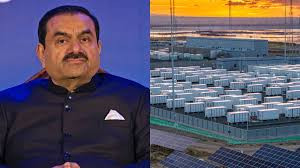Trump’s 125% Tariffs on China: A Trade War That Could Spark India’s Economic Opportunity

IIE DIGITAL DESK ; As former U.S. President Donald Trump returns to the political stage with aggressive trade rhetoric, his latest proposal to impose a 125% tariff on Chinese imports has stirred a global economic debate. While the move is primarily aimed at reviving domestic manufacturing in the United States, its ripple effects could be far-reaching — especially for developing economies like India. The proposed tariff escalation, if implemented, could significantly disrupt global supply chains and push American businesses to look for alternative manufacturing partners. In this shifting landscape, India is increasingly being viewed as a key contender to fill the vacuum left by China, offering a mix of scale, policy incentives, and geopolitical alignment.
Trump has long accused China of engaging in unfair trade practices, manipulating currency, and flooding global markets with cheap products. His latest promise to impose a sweeping 125% import duty on Chinese goods underscores his “America First” agenda, seeking to boost local manufacturing and reduce trade deficits. However, such aggressive protectionism could hurt U.S. businesses that rely heavily on Chinese components and raw materials, raising production costs and, ultimately, consumer prices. In the short term, markets may react with volatility, but for countries like India, this shift presents a rare window of opportunity.
India, with its growing manufacturing base and reform-oriented policies, is well-positioned to attract companies seeking to diversify away from China. Government initiatives like “Make in India” and the Production Linked Incentive (PLI) schemes across sectors such as electronics, semiconductors, textiles, and pharmaceuticals have already caught the attention of global investors. American and European companies, concerned about the long-term reliability of China due to trade tensions and geopolitical uncertainties, have begun exploring India as a viable alternative. If Trump’s tariff war escalates, this trend could accelerate further.
Moreover, the geopolitical climate plays in India’s favor. As U.S.-China relations remain frosty, Washington continues to deepen strategic ties with New Delhi, evident through defense agreements, tech collaborations, and investment flows. These relations could strengthen further under a Trump presidency or any administration with an anti-China stance. With the right policy push and infrastructure development, India could absorb a significant portion of the supply chain relocation, especially in areas like electronics assembly, mobile phone manufacturing, and EV components.
However, challenges remain. India still struggles with issues such as complex land acquisition laws, inconsistent state-level regulations, and a need for better logistics infrastructure. Labor reforms, while improving, also need more streamlining to attract large-scale manufacturing. To truly capitalize on this geopolitical and economic shift, India must act swiftly and decisively, removing bottlenecks that have historically deterred foreign investors.
The global economic order is clearly in flux, and Trump’s aggressive tariff policy on China could be a catalyst for a major reshaping of supply chains. For India, this is a moment that demands strategic action, visionary leadership, and a focus on long-term competitiveness. If executed well, what began as a U.S.-China trade confrontation could evolve into India’s chance to emerge as a global manufacturing powerhouse.
You might also like!
















